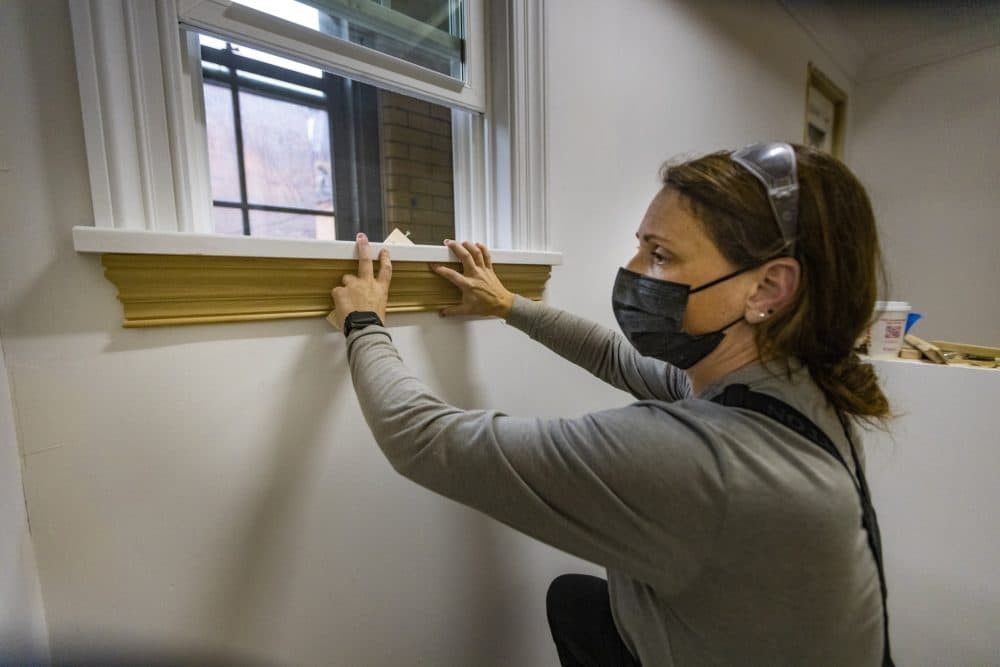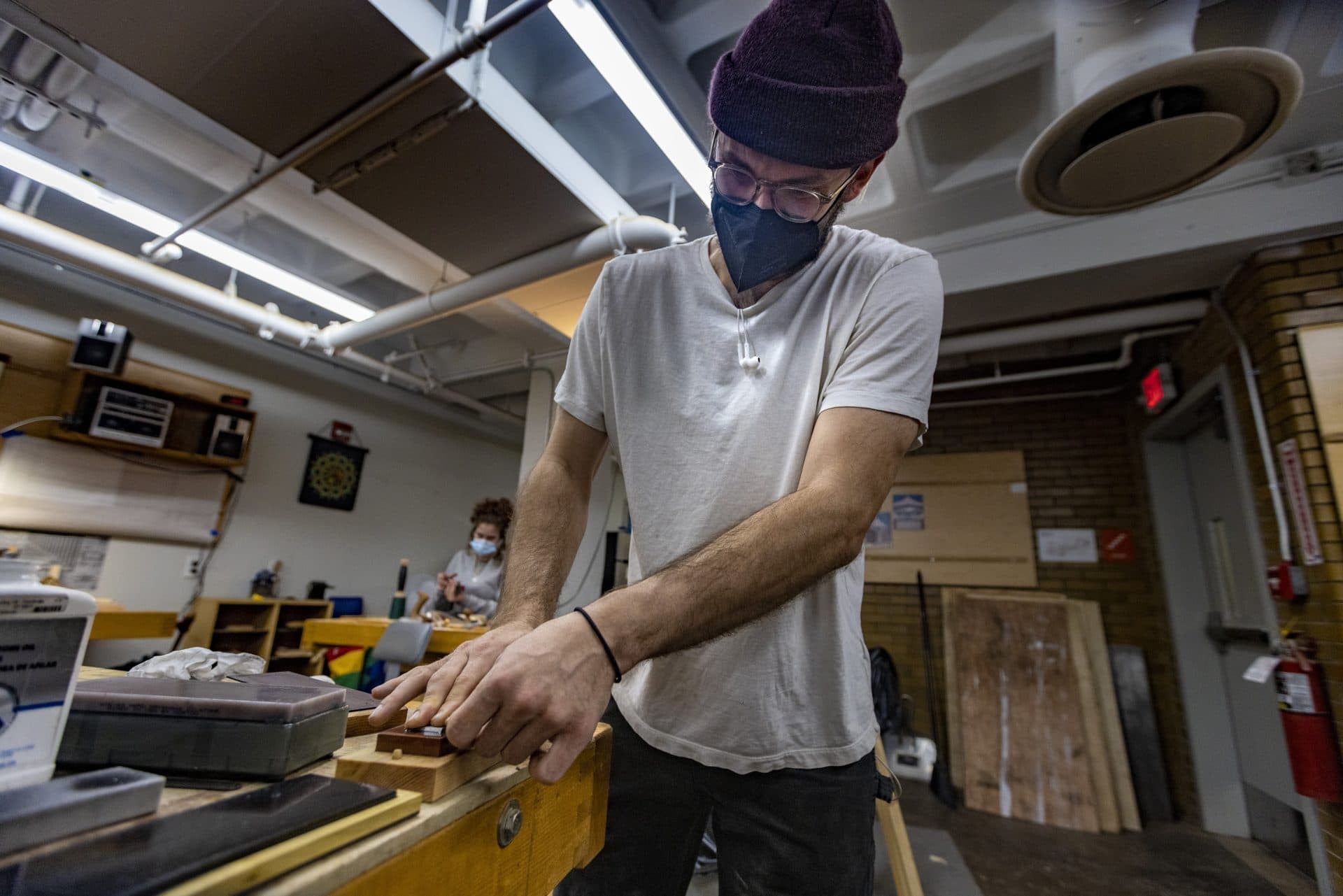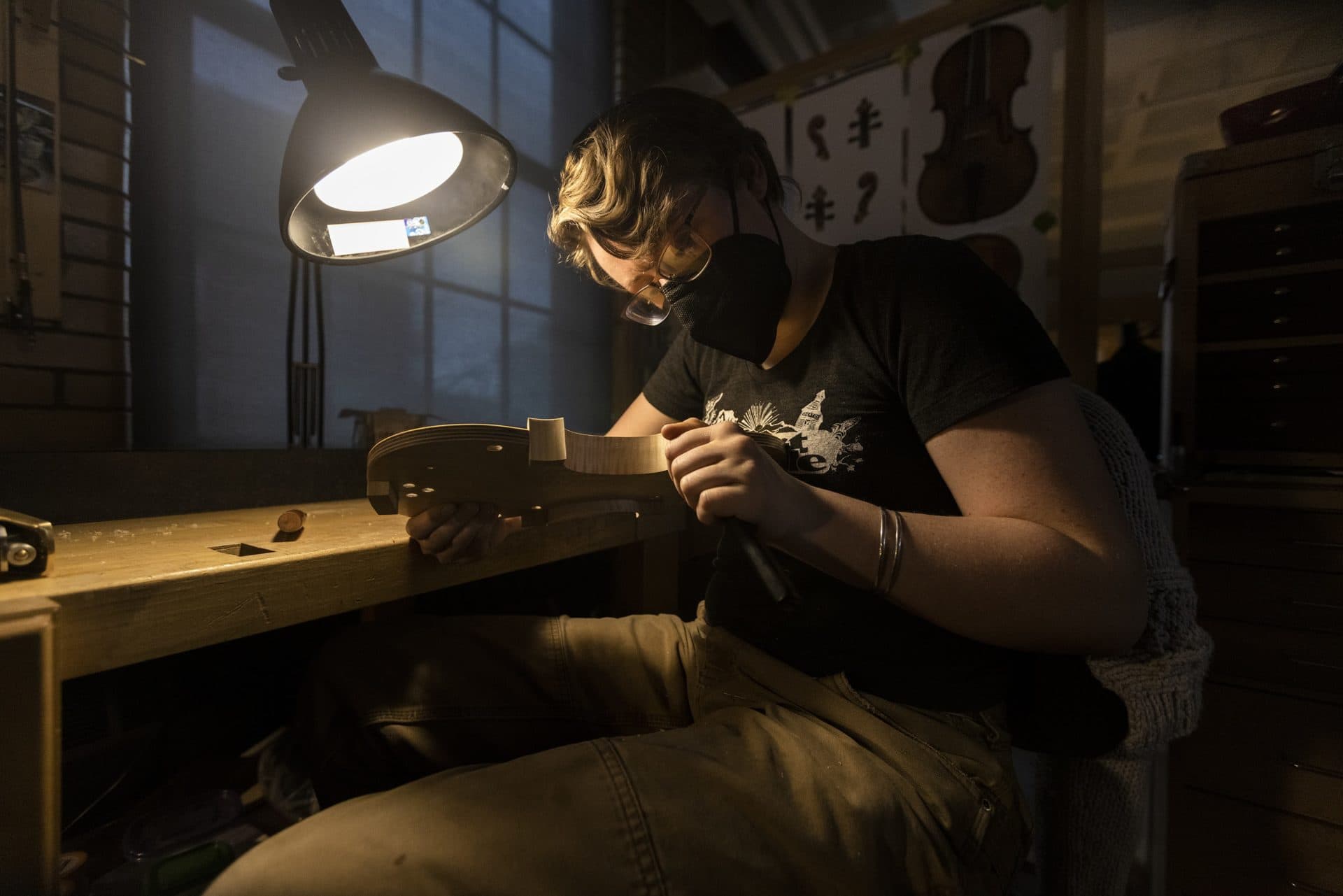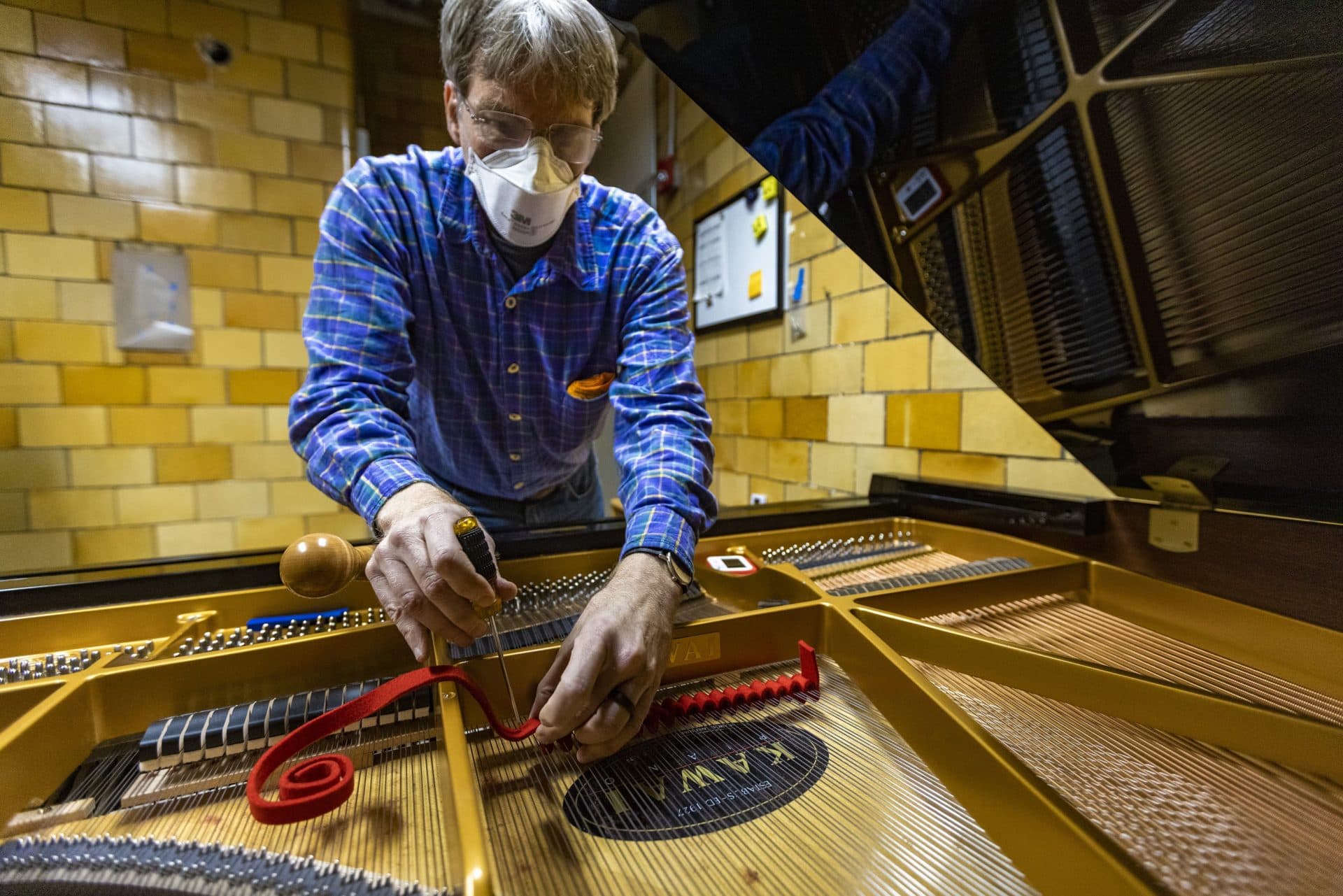Advertisement
Swapping laptops for hammers: ‘Great Resignation’ boosts interest in trades
Resume
Danielle Chagnon spent 15 years teaching math. But now, she's spending her days in Boston's North End learning another skill where she's found accuracy matters just as much as it does in math: carpentry.
“There’s so many little details that you’d never think of to make something that’s supposed to be unnoticeable," Chagnon said, holding up a section of window moulding amid the screeching of saws and the smell of cut pine.
The 38-year-old carpentry student is one of millions of Americans workers who are part of the Great Resignation, leaving jobs during the pandemic and embarking on new careers.
For some, that has meant ditching days in front of a computer screen for shifts swinging a hammer. And it has brought a surge in interest in trade schools across the country, places like the North Bennet Street School in Boston.
The school, which counts itself as the oldest trades college in the country, had to limit enrollment early in the pandemic for social distancing. But the school is returning to full capacity and has seen inquiries jump 25% over the past two years.

Chagnon first became interested in making things as a hobby, cobbling together tables and cutting boards in her garage. But each completed piece brought her closer to the idea that working with hand tools could be a new career. So she enrolled during the pandemic.
And she found carpentry isn't as alien to mathematics as one might assume.
"Most of what you do in math, especially higher level math, is approximation, and you try and make your approximations better and better and you get more sophisticated methods to do that," she said.
Yet, sometimes Chagnon wonders whether leaving her teaching job was the right call.
"My bank account is dwindling and I don't have a job yet," she said, smiling.
"Did I make the right choice?" she asked. "I can't know, really, until I'm years down the road anyways, but I'm doing something that I feel is right for me."
The "Great Redirection"
Carpentry — and separately, preservation carpentry — is just one of the trades you can study at North Bennet Street. The school offers courses in violin and furniture making, bookbinding, jewelry making and locksmithing.
Sarah Turner, head of North Bennet, said the school has seen a wave of career changers during the pandemic. She calls it the Great Redirection.
"That's also a generational shift," Turner added. "I think people are not as convinced that they're going to go into one line of work for the rest of their lives."
It's a shift unfolding across the country, with millions of workers quitting their jobs out of frustration and hope for a better future. Some say they are fleeing toxic workplaces. Others are seeking better pay or benefits. And many are seeking radically new ways to work.
All the departures have become a major problem for American companies. A recent survey suggests that almost nine in 10 firms are having a hard time filling certain positions.

But Tony Carnevale, head of the Georgetown University Center on Education and the Workforce, said the shortage of workers has become a boon for job-hunting Americans.
"We may be living in a world where the worker has choices that they never had before," Carnevale said. "For me, that's a hopeful thing."
And while way fewer high school grads are considering four-year colleges, the pandemic has meant more students opting to go into the trades. Data from the National Student Clearinghouse show a sharp drop in enrollment in liberal arts and many other majors, while two-year construction programs saw an increase.
If interest in the trades is already going up, Carnevale said that trend could accelerate. That's because the recent infrastructure plan — the $1.2 trillion one — should boost demand even further for construction workers across the country.
"When the politicians finally cut the ribbons for the new bridge or the new whatever, somebody's going to hire somebody," he said.
And Carnevale said the massive labor shortage can be fixed by two things: immigration and workforce training.
The school-to-jobsite pipeline
Many of the new workers are likely to come from vocational and technical schools, which typically train people for trades like electrical work or auto repair.
Kevin McAskill heads up vocational programs for Boston Public Schools. He said vocational enrollment has climbed nearly 40% over the last half decade.
"It kind of defeats the old paradigm of the old vocational school: 'Those that can't cut it academically, you send them to the vocational school,' " he said.
McAskill added that vocational students can earn good money doing something that sparks their interest — whether that means nursing, welding or writing code — and he sees that as a kind of holy grail for educators. And he loves seeing their passion.
"That fire," he said. "Oh my God, you got to see it."

Back at the North Bennet Street School, piano tech student Michael Carlin shows what it takes to tune the three strings of a single note on the piano.
Carlin left his job as an immigration lawyer to study piano technology at the North Bennet Street School, despite winning a landmark case in the Supreme Court a few years ago. He said his legal work had become too stressful.
"I was basically at the burnout stage," he said. "And I felt like I fought the good fight for a while."
So he decided to trade in his briefcase for a bag of piano-tuning tools.
Carlin has played piano for years, but he knew he'd never play professionally. Yet his dreams of making the biggest stages in music have been revived.
"I'm never going to get to Carnegie Hall by playing," he said. "Maybe I can get there by tuning."
This segment aired on March 7, 2022.
